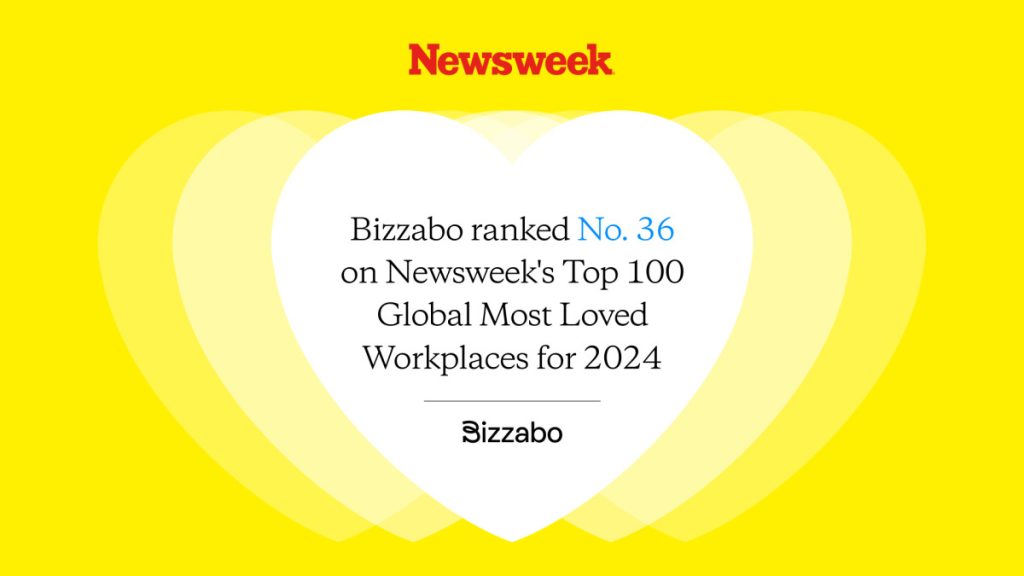The Ultimate Guide to Event Badges


In the world of events, the humble badge has evolved significantly, paralleling technological advancements and the growing need for enhanced security, networking, and data collection. From simple stickers to high-tech wearables, event badges have transformed to become an integral part of the attendee experience and event management strategy.
This article delves into the evolution of event name tags, the roles they play, the introduction of Bizzabo’s Klik SmartBadge™, and what the future potentially holds for this aspect of event technology.
The Evolution of Event Badges
Event badges have come a long way since their inception. Let’s take a look at the different stages of the evolution of name tags for events:
- Sticker event name tags: The journey of event badges began with sticker name badges. In 1959, C-Line Products introduced the iconic “Hello, my name is …” sticker badge. These badges were simple and easy to use, allowing attendees to write their names on the badge and stick it to their clothing.
- Traditional printed paper badges: As events grew in size and complexity, the need for more professional-looking badges arose. Traditional printed paper badges became popular, offering a more polished and organized appearance. These badges were typically printed on cardstock and featured the attendee’s name, organization, and event details.
- Name badges in a plastic sleeve on a lanyard: Plastic sleeves came into use to make badges more durable and convenient. These badges were inserted into a plastic sleeve and then attached to a lanyard worn around the neck. This allowed attendees to easily display their badges and keep them visible throughout the event.
- Technological advancements: With the advancements in technology, event badges started incorporating various features to enhance attendee experience and event management. One significant development was the introduction of QR codes. These codes could be scanned using a smartphone, providing instant access to event information, schedules, and networking tools.
- Transition to high-tech event wearables: In recent years, event badges have significantly transformed into high-tech event wearables. These badges now incorporate advanced technologies like RFID (radio frequency identification) and NFC (near-field communication). These technologies enable seamless access control, personalized content delivery, and interactive experiences for attendees.
The evolution of event badges reflects the changing needs and expectations of today’s attendees. From simple sticker name badges to high-tech wearables, event badges have become integral to the event experience, facilitating networking, enhancing security, and providing valuable event information.
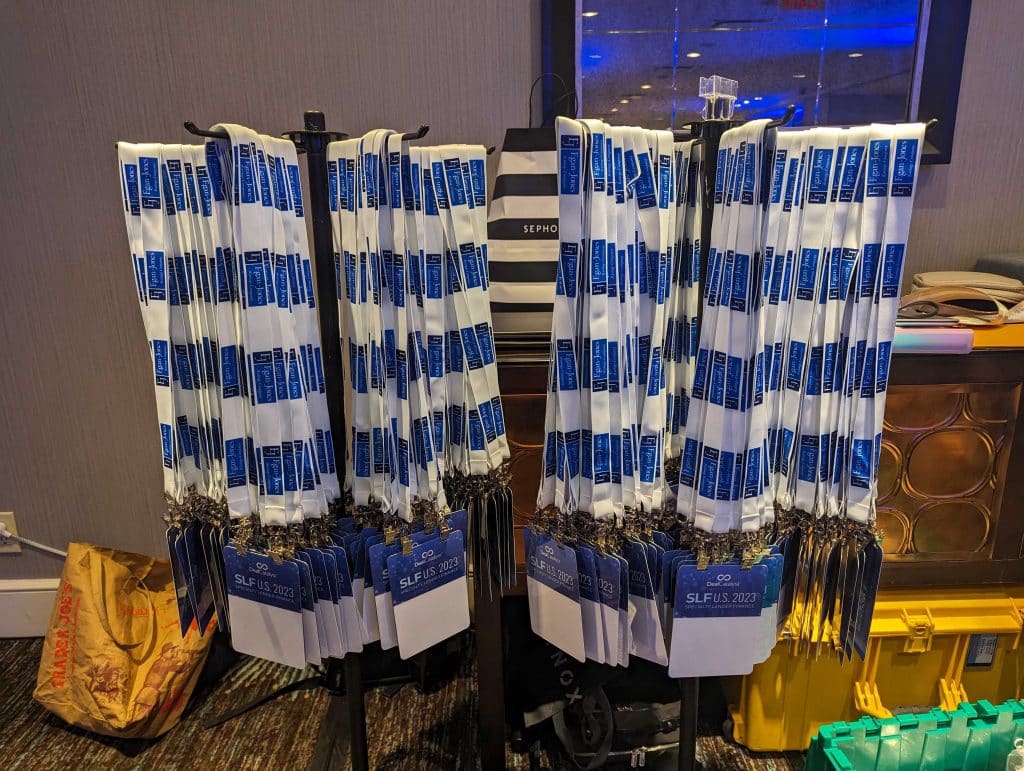
The Role and Importance of Event Badges
Event name badges play a crucial role in the success of any event. They serve multiple purposes and offer various benefits to both event organizers and attendees. Here are some key roles and the importance of event name badges:
First Impressions and Branding
Event name badges serve as a visual representation of the event and its branding. They create a professional and organized image for the event, making a positive first impression on attendees. Name badges with the event logo and design can also serve as keepsakes, reminding attendees of their participation in the event even after it is over.
Security and Access Control
Event badges are essential for maintaining security and controlling access to restricted areas. Event organizers can easily identify authorized participants and prevent unauthorized access by providing attendees with personalized badges. This helps ensure the safety and security of both attendees and the event venue.
Networking and Interaction Among Attendees
Event name badges are vital in facilitating networking and interaction among attendees. By displaying their names, organizations, and possibly job titles, attendees can quickly identify and connect with other participants who share similar interests or professional backgrounds. Name badges also serve as conversation starters, making it easier for attendees to initiate and build valuable connections.
Data Collection and Management
Event badges can be used to collect valuable data about attendees. Event organizers can gather information such as attendee demographics, session attendance, and engagement levels by incorporating technologies like QR codes, RFID, or NFC. This data can help organizers analyze event performance, personalize future communications, and improve the overall event experience.
Overall, event name badges are essential for event organizers to enhance the attendee experience, ensure security, and collect valuable data. They contribute to the professionalism of the event, promote networking opportunities, and serve as a tangible reminder of the event for attendees.
Have You Seen Smart Badges?
In event technology, Bizzabo’s Klik SmartBadge emerges as a game-changer, redefining how attendees, organizers, and exhibitors experience events. This innovative wearable goes beyond the traditional event badge, offering features designed to enhance engagement, provide valuable insights, and promote sustainability.
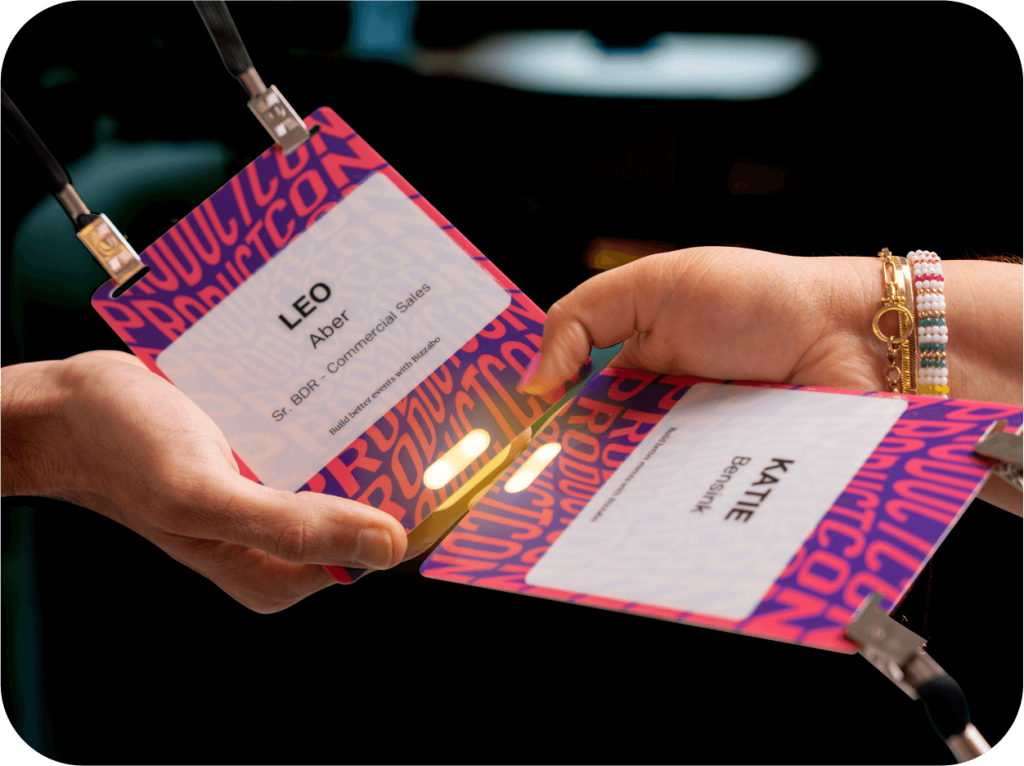
The Klik SmartBadge is not your average event badge. It’s an interactive device that attendees wear, enabling them to network, engage with content, and participate in sessions effortlessly. With a simple click, users can exchange contact information, interact with exhibitors, and check into sessions, all while the system captures this data for real-time insights.
Here are a few other powerful benefits of Bizzabo’s SmartBadge:
- Sustainability: Sustainability is at the heart of the SmartBadge. Understanding the environmental impact of events, Bizzabo offers recyclable event badges that are also reusable. The hardware that powers the SmartBadge can be collected and refurbished post-event, significantly reducing waste and promoting a greener event industry.
- Networking and engagement: The SmartBadge transforms event networking from a daunting task to an engaging experience. Attendees can connect and share their digital business cards with a simple click, breaking the ice and encouraging interaction. The badge’s light cues and vibrations notify users of mutual interests or connections, fostering meaningful engagement.
- Lead capture and data management: With one tap, exhibitors can retrieve attendee contact information, making lead collection seamless and efficient. All interactions are stored in a centralized system, simplifying data management and follow-up processes.
- Real-time insights: Organizers can access live data showing attendee behavior, popular sessions, and overall event engagement. This information is crucial for making on-the-spot decisions, helping to improve the event as it happens.
- Location tracking and session attendance: Organizers can see which areas of the event are most popular and how attendees move throughout the space, allowing for better resource allocation and crowd management.
- Light cues and interactivity: The Klik SmartBadge™ is more than a passive tool — it’s an interactive participant in the event. Event organizers can use light cues to signal session start times, notify attendees of personal messages, or even create synchronized light shows, adding an element of surprise and delight to the event experience
- Post-event content and nurturing: Post-event, organizers can analyze attendee interests, session popularity, and engagement levels to inform future content marketing strategies and lead nurturing campaigns. This post-event analysis is critical to continuous improvement and sustained attendee engagement. It can also be powerful in repurposing popular event content into ongoing marketing campaigns.
In essence, Bizzabo’s Klik SmartBadge is not just a technological innovation; it’s a comprehensive solution for more sustainable, engaging, and data-driven events. By harnessing the power of this smart wearable, event professionals can create experiences that resonate with attendees and deliver measurable results.
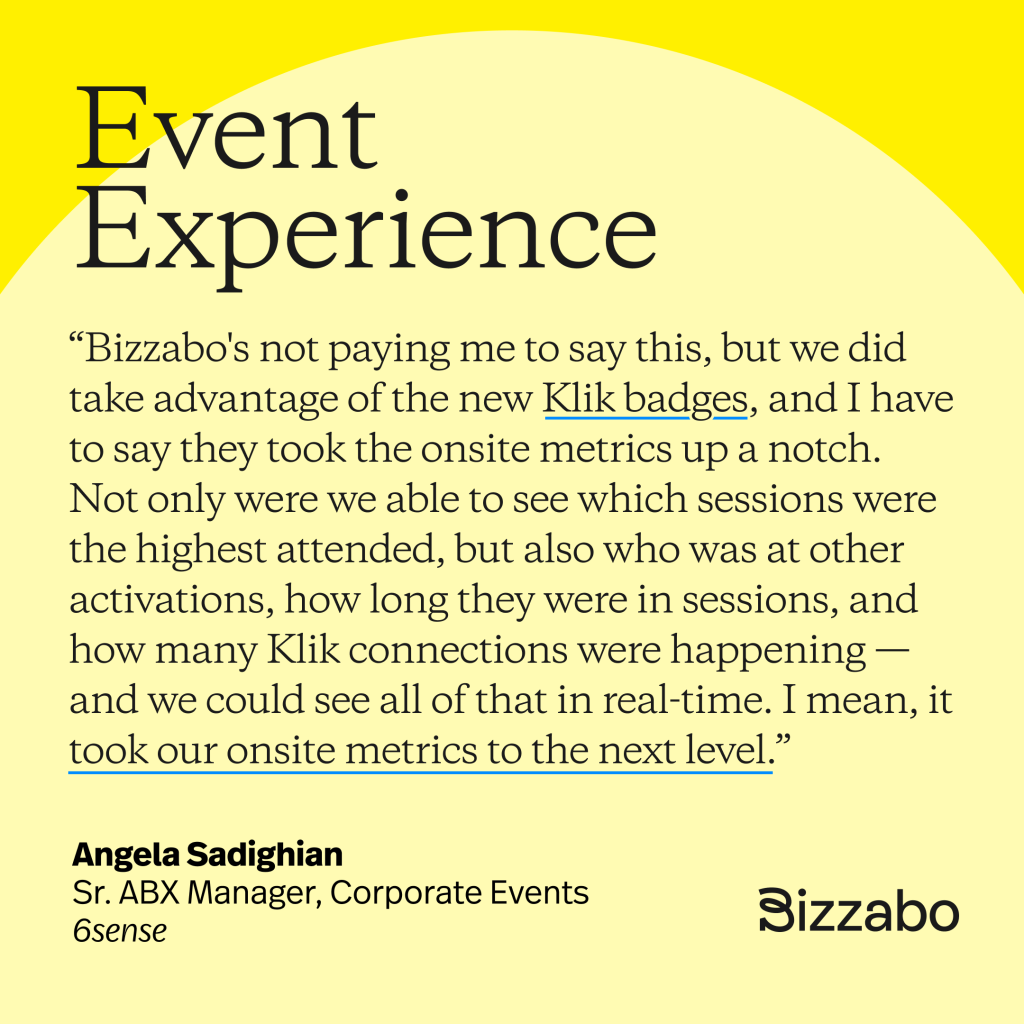
Implementing Smart Event Badges at Your Next Event
Adopting high-tech event wearables can significantly elevate the attendee experience at your events. However, successfully implementing this technology requires strategic planning, integration, and management. Here’s how to effectively incorporate smart badges and their powerful event networking tools into your next event:
Planning and Pre-Event Considerations
Before your event kicks off, it’s crucial to establish clear goals for what you want to achieve with smart badges. Are you focusing on enhanced networking, detailed attendee tracking, or robust lead capture for exhibitors? Your objectives will dictate how you utilize and promote the smart badges.
Additionally, consider the logistics: How will the badges be distributed? What does event badge printing look like? Will you require stations for attendees to pick up and activate their badges, or will they be mailed in advance? Do you want to DIY your event check-in using an onsite solution like the Bizzabox or will you opt for a bespoke, full-service onsite support and management solution?
Ensure you have the infrastructure to support your plan, including any necessary hardware and staff training to handle setup and potential troubleshooting.
Integrating with Event Management Software
Smart badges are most valuable when fully integrated with your event management software. This integration means that data collected by the badges, such as attendee contact information, session attendance, and engagement metrics, can be automatically synced with your software.
Check with your software provider to understand the integration capabilities and ensure attendee data flows seamlessly between systems. This connectivity enhances the attendee experience (think personalized agendas and networking recommendations) and simplifies management tasks on your end.
Ensuring Attendee Onboarding and Understanding
For attendees to get the most out of their smart badges, they need to understand how they work and the benefits they offer. Develop a straightforward onboarding process that educates attendees on using their badges, through a welcome email with instructions or a quick tutorial at badge pick-up stations. Staff should also be prepared to assist with any questions attendees have on-site.
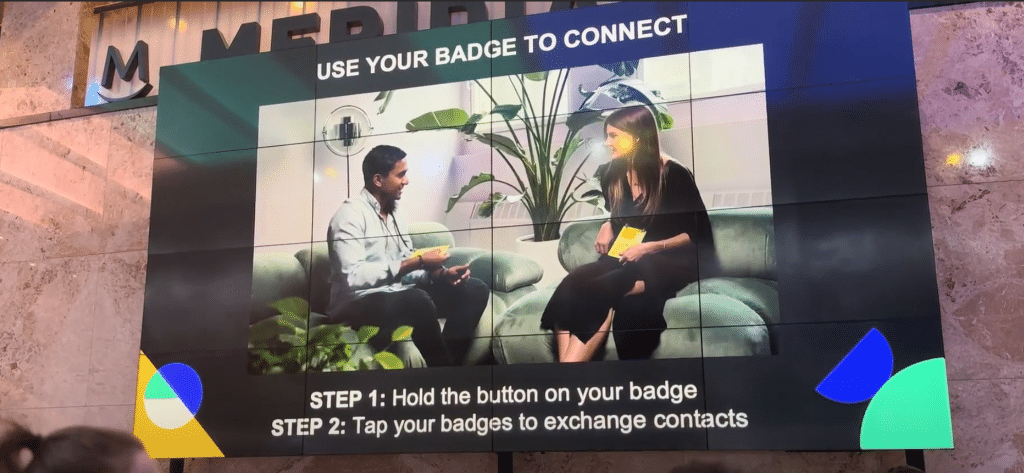
Additionally, communicate the value behind the smart badges. If attendees understand that these badges can enhance their networking opportunities, provide personalized agendas, or grant easy session access, they’re more likely to engage.
Managing and Analyzing Data Post-Event
The event data collected by smart badges is a goldmine of insights, but it’s only as valuable as your analysis and subsequent actions. Post-event, take the time to dive into the data. Look for trends in session attendance, high-traffic locations, popular times for networking, and more. This analysis isn’t just about measuring the success of your event; it’s about gleaning insights that can inform future decisions.
For instance, if certain topics or formats were popular, that’s a cue to include similar content in future events. Additionally, consider how this data can enhance your lead-nurturing campaigns or content marketing strategies.
The Future of Event Badges
Event badges have become an integral part of modern events, serving multiple purposes beyond identification. In addition to enhancing the attendee experience and ensuring security, event badges can collect valuable data for event organizers. Here is a look at the future of event badges and what you can expect as you plan for 2024:
Integration of IoT (Internet of Things)
Badges will become smarter and more connected through the integration of IoT. This technology will enable badges to interact with other connected devices and systems at the event, providing a more seamless and personalized attendee experience.
For example, a smart badge could automatically check an attendee into a session, order them a drink when they approach the bar, or even adjust the lighting and temperature in a room based on their preferences.
Enhanced Use of RFID and NFC Technologies
Although RFID and NFC are already in use, future badges will leverage these technologies even more. This could include enhanced touch-free check-ins, payments, and more detailed tracking of attendee movements and interactions, all contributing to richer data collection and analysis.
Biometric Integration
Future event badges may incorporate biometric technologies, such as fingerprint or facial recognition, enhancing security and personalization. This could help prevent unauthorized access and create a more tailored experience for each attendee.
Augmented Reality (AR) and Virtual Reality (VR)
AR and VR technologies could be integrated into event badges to provide immersive experiences. For instance, scanning a badge could trigger an AR experience on an attendee’s mobile device, such as a 3D map or virtual tour. VR could be used for virtual attendance, where the badge acts as a key to sessions for remote attendees.
Sustainability Through Technology
As the event industry becomes more eco-conscious, technology will play a key role in sustainability. This might include badges made from recycled or biodegradable materials, solar-powered badges, or digital-only badges for virtual events.
AI-Powered Networking
With advancements in artificial intelligence, smart badges could facilitate more effective networking by suggesting potential connections based on common interests, professional goals, or mutual contacts. They could even schedule meetups or recommend optimal times and locations for breaks based on an individual’s itinerary.
Real-Time Health Monitoring
In light of global health concerns, future event badges may incorporate health monitoring features like temperature checks or heart rate sensors to ensure the well-being of attendees. They could also be connected to systems that alert health professionals if an attendee needs assistance.
Dynamic Content and Personalization
Badges may feature dynamic displays or e-ink technologies that change in real time, showing an attendee’s agenda, upcoming sessions, or personalized messages from sponsors and exhibitors.
These trends point toward a future where event badges are not just identifiers but are integral to a comprehensive, interactive, and personalized event experience. The focus will be on enhancing attendee engagement, streamlining event operations, and gathering insightful data while ensuring sustainability and well-being.
Get Started: Make Smart Badges Part of Your Event Strategy
As we embrace the future of events, adopting technologies like the SmartBadge is not just innovative; it’s essential. “The Klik SmartBadge isn’t just a tool for events; it’s a tool for connecting humanity,” says Will Curran, Head of Klik. By harnessing this technology, event professionals can create more engaging, insightful, and sustainable events.
Interested in learning more? Watch Will Curran on-demand for a deep dive into the world of smart event badges.
